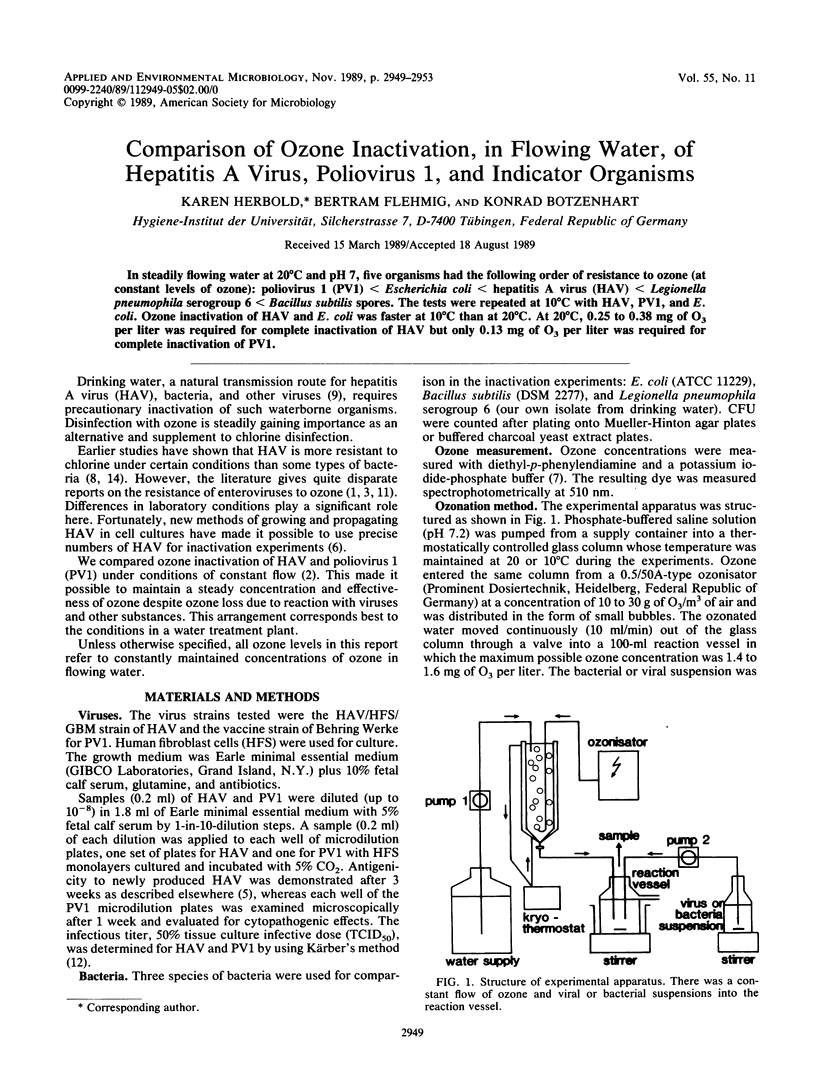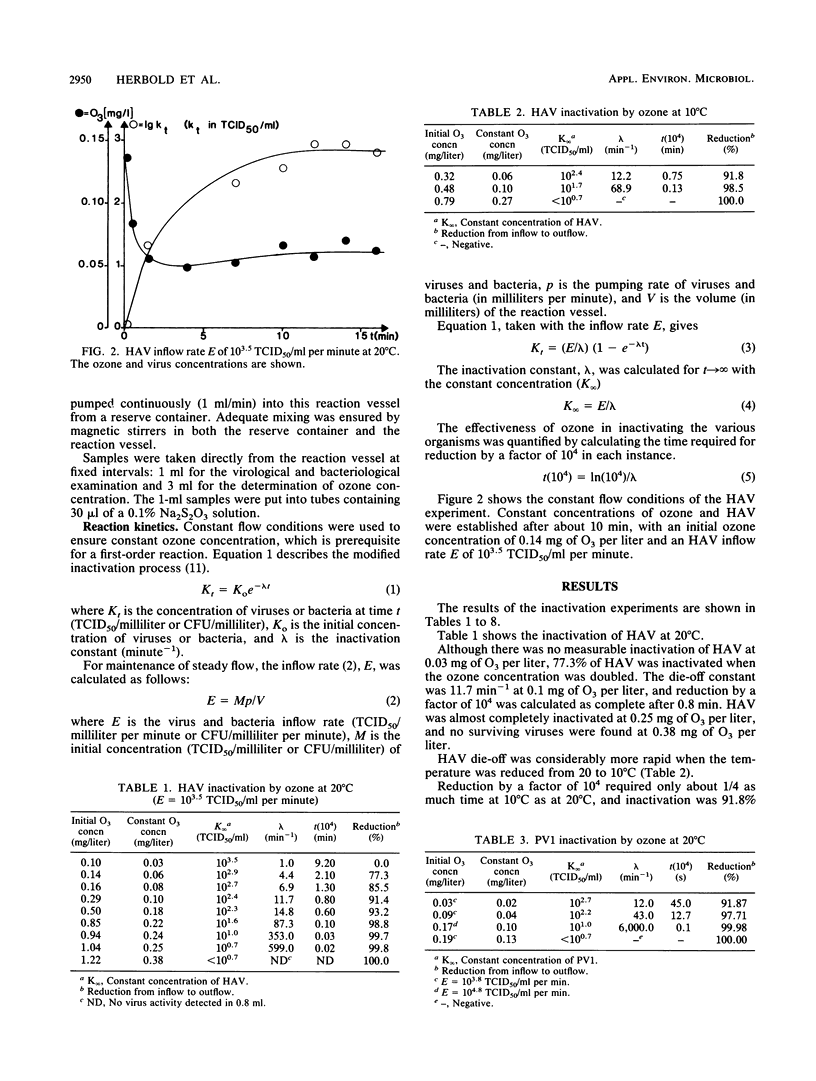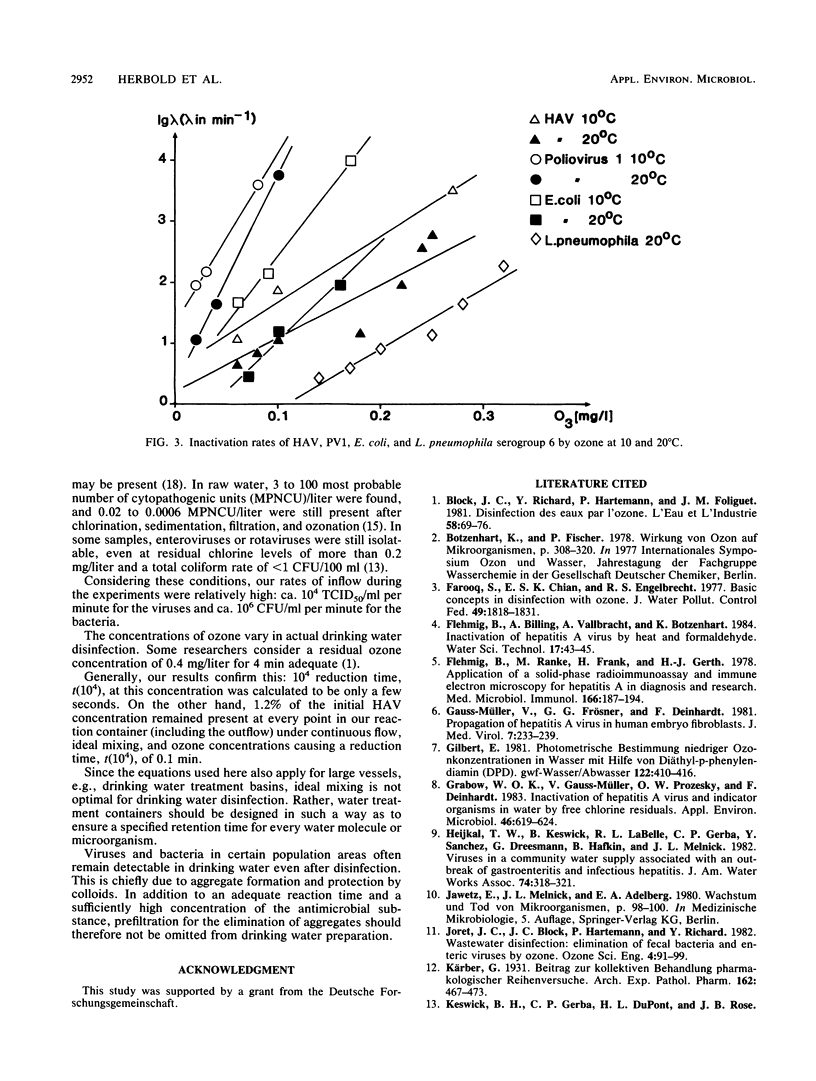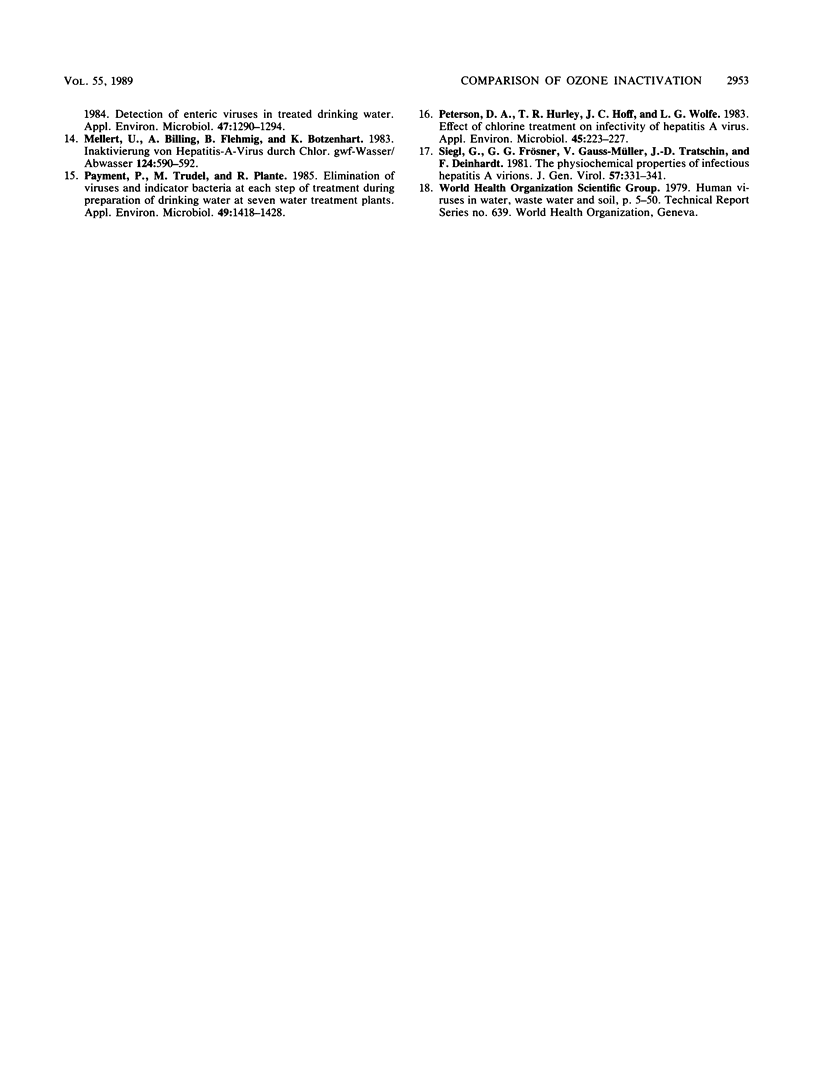Abstract
In steadily flowing water at 20 degrees C and pH 7, five organisms had the following order of resistance to ozone (at constant levels of ozone): poliovirus 1 (PV1) less than Escherichia coli less than hepatitis A virus (HAV) less than Legionella pneumophila serogroup 6 less than Bacillus subtilis spores. The tests were repeated at 10 degrees C with HAV, PV1, and E. coli. Ozone inactivation of HAV and E. coli was faster at 10 degrees C than at 20 degrees C. At 20 degrees C, 0.25 to 0.38 mg of O3 per liter was required for complete inactivation of HAV but only 0.13 mg of O3 per liter was required for complete inactivation of PV1.
Full text
PDF




Selected References
These references are in PubMed. This may not be the complete list of references from this article.
- Farooq S., Chian E. S., Engelbrecht R. S. Basic concepts in disinfection with ozone. J Water Pollut Control Fed. 1977 Aug;49(8):1818–1831. [PubMed] [Google Scholar]
- Flehmig B., Ranke M., Frank H., Gerth H. J. Application of a solid-phase radioimmunoassay and immune electron microscopy for hepatitis A in diagnosis and research. Med Microbiol Immunol. 1978 Nov 17;166(1-4):187–194. doi: 10.1007/BF02121149. [DOI] [PubMed] [Google Scholar]
- Gauss-Müller V., Frösner G. G., Deinhardt F. Propagation of hepatitis A virus in human embryo fibroblasts. J Med Virol. 1981;7(3):233–239. doi: 10.1002/jmv.1890070308. [DOI] [PubMed] [Google Scholar]
- Grabow W. O., Gauss-Müller V., Prozesky O. W., Deinhardt F. Inactivation of hepatitis A virus and indicator organisms in water by free chlorine residuals. Appl Environ Microbiol. 1983 Sep;46(3):619–624. doi: 10.1128/aem.46.3.619-624.1983. [DOI] [PMC free article] [PubMed] [Google Scholar]
- Payment P., Trudel M., Plante R. Elimination of viruses and indicator bacteria at each step of treatment during preparation of drinking water at seven water treatment plants. Appl Environ Microbiol. 1985 Jun;49(6):1418–1428. doi: 10.1128/aem.49.6.1418-1428.1985. [DOI] [PMC free article] [PubMed] [Google Scholar]
- Peterson D. A., Hurley T. R., Hoff J. C., Wolfe L. G. Effect of chlorine treatment on infectivity of hepatitis A virus. Appl Environ Microbiol. 1983 Jan;45(1):223–227. doi: 10.1128/aem.45.1.223-227.1983. [DOI] [PMC free article] [PubMed] [Google Scholar]
- Siegl G., Frösner G. G., Gauss-Müller V., Tratschin J. D., Deinhardt F. The physicochemical properties of infectious hepatitis A virions. J Gen Virol. 1981 Dec;57(Pt 2):331–341. doi: 10.1099/0022-1317-57-2-331. [DOI] [PubMed] [Google Scholar]


